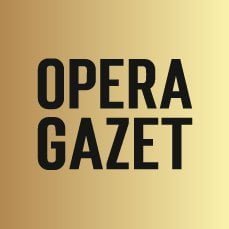Giovanna d’Arco
Giovanna d’Arco. Dramma lirico in four acts by Giuseppe Verdi. Libretto by Temistocle Solera. First performed Milan, Teatro alla Scala, 15 February 1845. First performed at Teatro Costanzi, 15 May 1972. From 17 to 24 October, Rome’s Teatro dell’Opera presented Verdi’s Giovanna d’Arco. Performance attended: Premiere, 17 October 2021.
Giovanna: Nino Machaidze; Carlo VII: Francesco Feli; Giacomo: Roberto Frontali; Talbot: Dmitry Beloselskiy; Delil: Leonardo Trinciarelli; Teatro dell’Opera di Roma Orchestra, Chorus and Corps de ballet.
Conductor: Daniele Gatti
Director and choreographer: Davide Livermore
Music: *****
Staging: **
Giovanna d’Arco is generally considered one of Verdi’s “minor” operas, and certainly not one of the best known and most performed titles in the Italian and international opera scene. The choice of Rome’s Teatro dell’Opera to stage this early work is therefore courageous and commendable, especially when the variety of proposed titles seems to be increasingly dwindling in favor of the “usual things”. The reason for the scarce presence of this opera in theaters is not to be found on the musical level, since we are talking about a work comparable to Nabucco, or to Ernani, and which Verdi himself considered in 1845 to be his “best work”. The greatest shortcoming, or what at least today can be felt as such, lies mainly on the dramaturgical side. The libretto taken from Schiller’s play significantly modifies its contents, not only as far as history is concerned (the heroine does not die at the stake, but in battle), but also in some fundamental respects, for example the importance given to the character of Giovanna’s father, or the fact that she does not fall in love with an English soldier but with Charles VII, King of France.
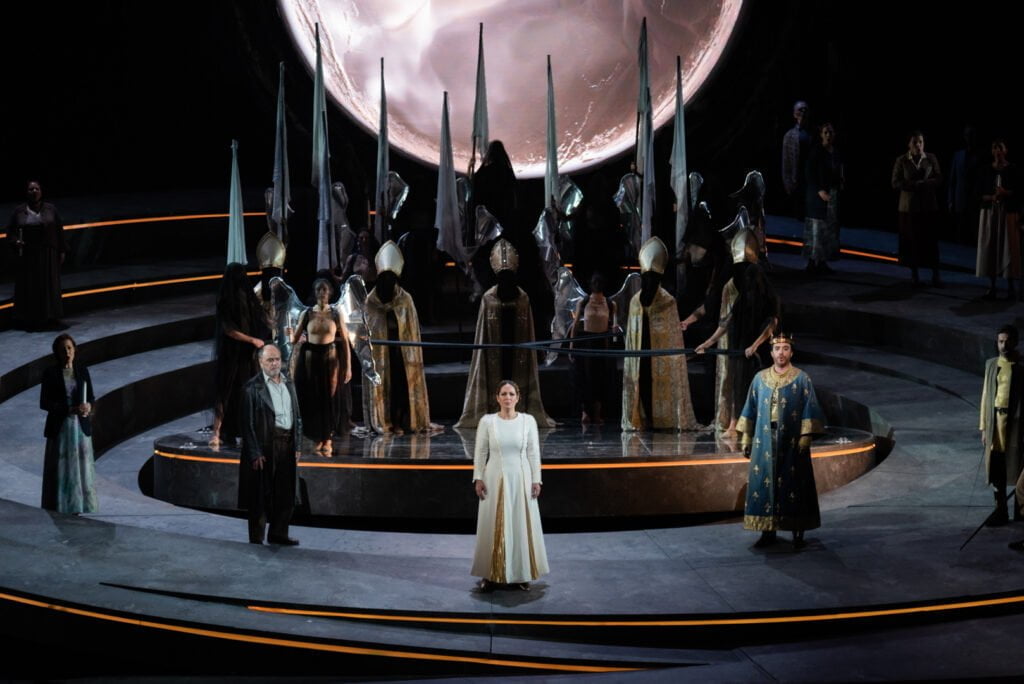
Certainly, Verdi must not have disliked these changes; nevertheless some situations and solutions seem very ill chosen. On the other hand, from a musical point of view, the critics have often disagreed with each other in their judgments, while recognizing the validity of some elements, starting with the famous ouverture. Undoubtedly, the demonic temptations in the form of a “country waltz” (as musicologist Massimo Mila wrote) sound unconvincing, even if the whole scene is designed with the masterful confidence that characterizes every Verdi score. Even the finale of the opera looks less inspired than those of the more mature masterpieces. On the other hand, the choral scenes, the arias of the protagonists, the duet between Giovanna and King Carlo, and some concertato are certainly more interesting.
In this new performance, Maestro Daniele Gatti led the excellent orchestra of Rome’s Teatro dell’Opera with an expert hand, favoring a not-too-hurried tempo, and avoiding “band effects” which are sometimes lurking in certain passages, particularly in the young Verdi. Gatti also skillfully enhanced the great tonal and dynamic variety present in the work, starting right from the ouverture.
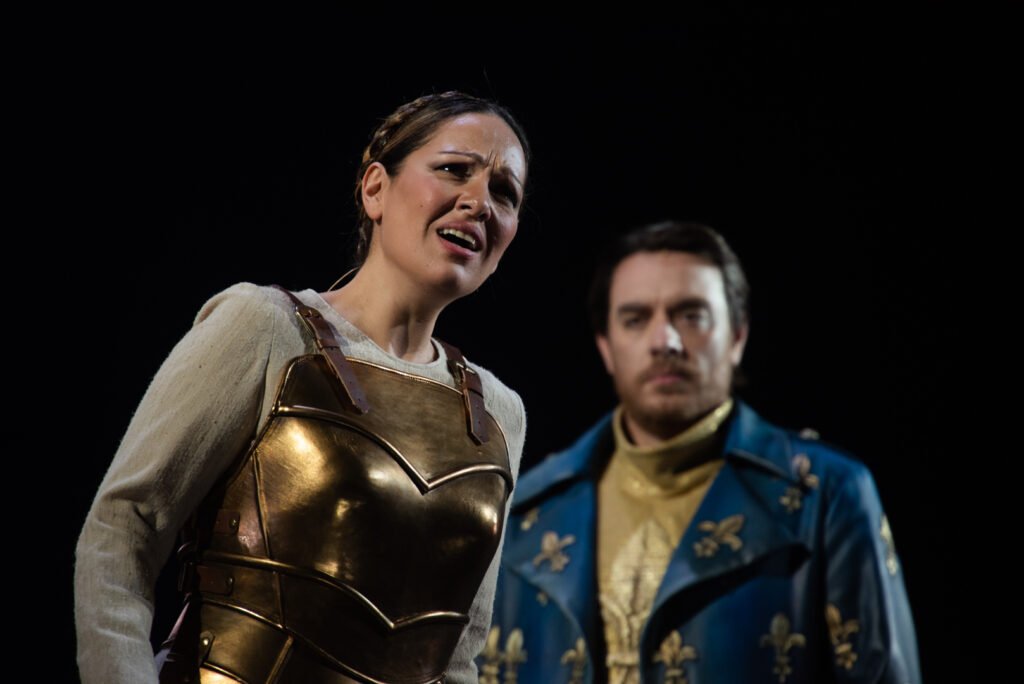
The imposing and enveloping chorus, far from playing second fiddle in this opera, responded perfectly to the orchestra. It was directed by Roberto Gabbiani, also present on stage as a chorister.
The protagonist of the evening was undoubtedly Nino Machaidze in the role of Giovanna. Gifted with great volume, as well as a notable stage presence, the Georgian soprano commands the attention of the public from the very beginning, despite some “distractions” (due to the staging), which we will discuss later. Capable of delicate nuances when necessary, but also incredibly powerful in critical moments (the endings of the first and second act are memorable), Machaidze confirmed herself as a complete singer in a score that put a strain on the protagonist’s vocal and acting skills.
The tenor Francesco Meli also delivered an excellent performance. His Carlo was both regal and passionate. His confident and stentorian voice is well suited to this role, and even in the most reflective moments the tenor was able to perfectly dose its intensity.
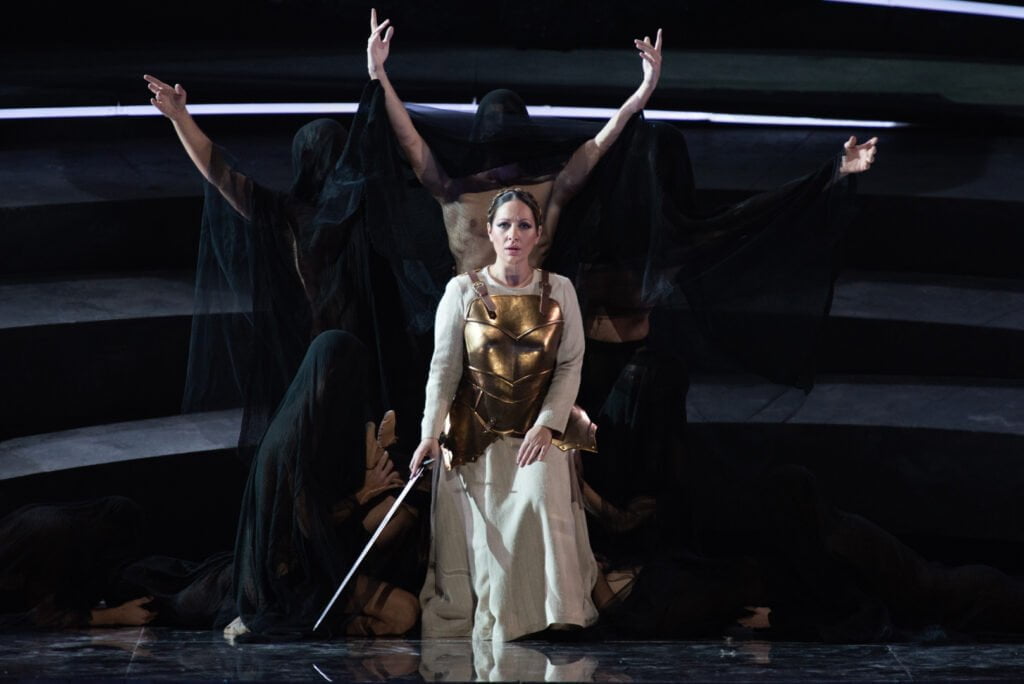
The veteran baritone Roberto Frontali gave life to a tormented and resolute Giacomo. He mastered his character with great class and confidence, despite a few moments in which he seemed to have slight difficulty with the demanding score.
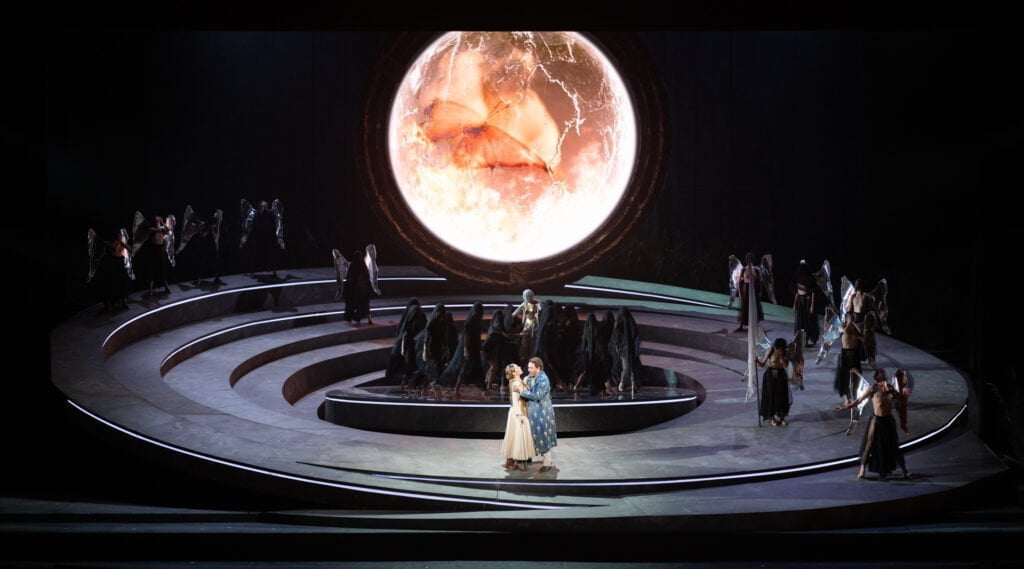
Leonardo Trinciarelli and Dmitry Beloselskiy also did well in their minor roles as Delil and Talbot, respectively.
One of the attractive features of opera, if not the main one nowadays, for some people is undoubtedly the staging and the theatrical direction. For this edition of Giovanna d’Arco, the scenes – indeed THE scene – consisted of a circular platform, containing several steps of increasing height towards the outer edge. According to the director, Davide Livermore, the structure was meant to symbolize the ascent to heaven or the descent to the underworld. In any case, practically every character – including the angels – has traveled the entire circumference several times, returning to the starting point without particular damage or benefit. The background contained a huge disk-sphere where moving images were continuously projected, in themselves very suggestive and captivating, but almost irrelevant to the opera (one of the most frequent was the close-up of a butterfly), and at times distracted from the performance itself.
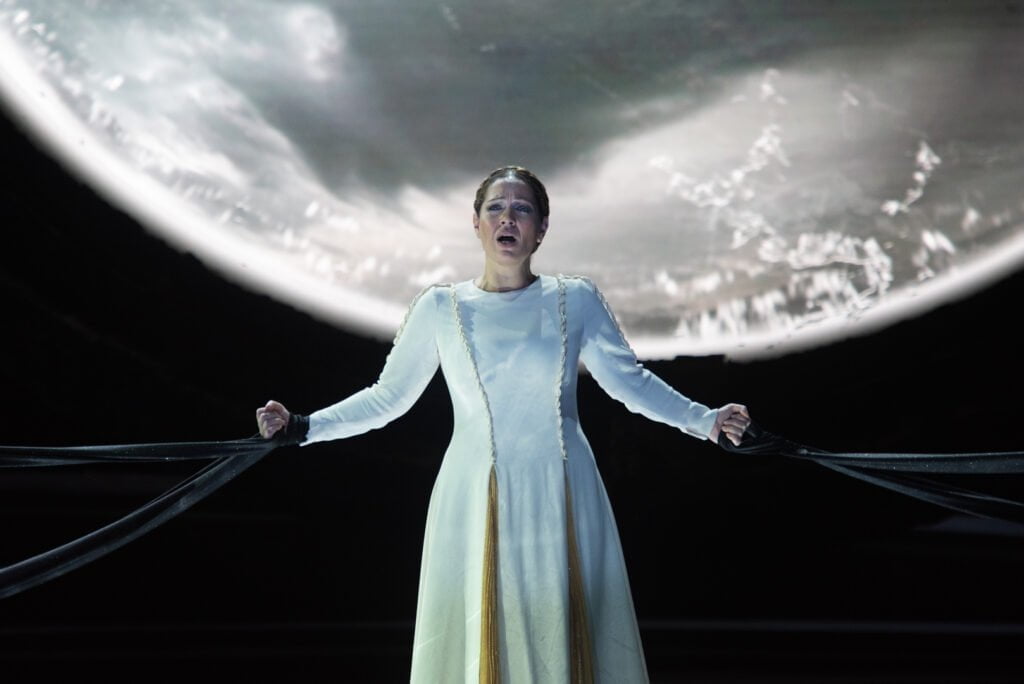
The variety of the scenes could have been ensured by the variety of the projections, which nevertheless constantly changed within this sort of “crystal ball” in perennial rotation. Ultimately, more than anything else, this had a dizzying effect, at least on yours truly. In any case, one cannot fail to observe how these “minimalist” solutions generally allow save opera companies a lot of money, compared to the more traditional and complex scenography with real scene changes. Most likely, this aspect influenced the artistic decisions. Even the choice of costumes were perplexing at times. They seemed to have been randomly extracted from the theater warehouse: the English and French warrior uniforms with a vague medieval flavor were combined with the peasants’ contemporary clothes, complete with leather jackets, jeans, and sneakers. But perhaps the most characteristic idea of director Livermore was to present on stage a “double” of the protagonist, in the figure of a dancer-mime. This “alter-ego” had to symbolize the inner conflict of the warrior-saint, etc. etc.
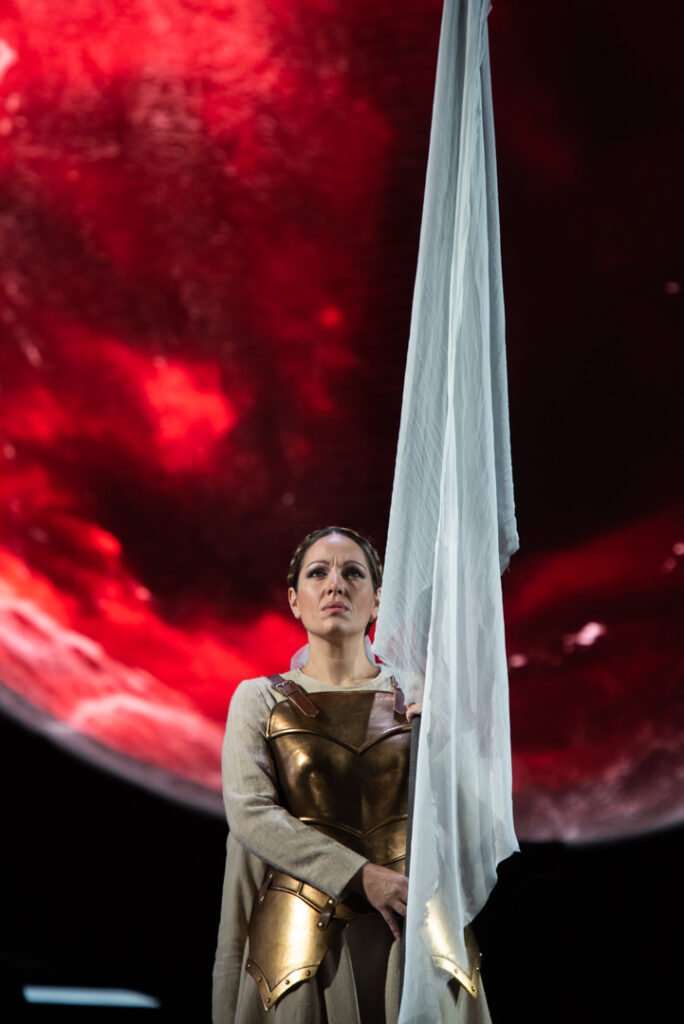
Not a particularly original idea, however, given that the “duplicates” of the characters or even their dancing substitutes have been used for a long time. In fact, it is one of the biggest clichés in nowadays opera. In addition to Giovanna (played by the prima ballerina Susanna Salvi), a large group of dancers were often present on stage, called to interpret the angels and demons, to whom the choir gave voice. Actually, they are also the ones who open the show, entering the scene even before the start of the ouverture, used in this case as if it were the music for a true ballet. The presence of the dancers, however, was far from secondary in the rest of the opera. The addition of dance elements was perhaps meant as a partial support to the total lack of scenic elements.
At the end of the evening, the audience warmly applauded the performance, which, it should be remembered, was the first after a long-forced closure due to the coronavirus pandemic.
